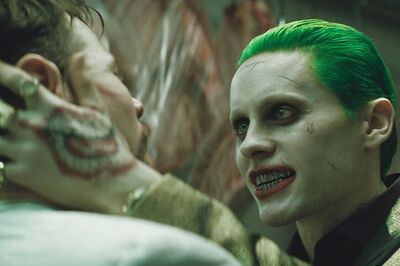
views
I have this maddening passion for rolls of all kinds. I don’t know what it is about meat wrapped up in parathas that gets me crazy, but I can trace this back to my early childhood. I was never good at carrying a dabba to school. In fact, I would quietly chuck my tiffin into the dustbin before I returned home, so that I wouldn’t be caught with box full of uneaten food. I only started enjoying my dry-lunch, after my mother started filling my lunchbox with the kind of food that we used to picnic with.
The family used to drive up to Khandala and Mahableshwar two times a year. It was a long drive up the Ghats in those days, grub had to be packed and be carried along. It was obligatory. And my mother’s mother was the wizard of food-on-the-run. The normal tuck was yellow sookha aloo, spiced with green chillies, curry leaves, and dry methi wrapped in large, deep-fried pooris. Or sookha mutton, which is mutton, sautéed with onions, khada masala, garam masala powder and slow frizzled till dark and dry and then finished with chopped coriander and green chillies. This dry mutton would be filled in tall stainless-steel tins, and on our way to Dadar to head out onto the Old Bombay-Poona Road, we would stop and pick up hot, hot pav and brun, en route at City Bakery, Worli.
These were the days before expressways and a trip to Khandala would take four hours, if lucky. Halfway down, all the cars would stop and we would find trees to sit under and open up our movable feast. On one occasion, my grandmother decided against stopping for bread, as she had already wrapped the sookha mutton in parathas, with a little sliced raw onion and chutney. Those rolls, that day, hit the ball out of the park. Fourty-five years later, I can still taste them, and they got me hooked onto any kind of meat wrapped in a paratha roll, especially “The Frankie”.
The yellow and reds stalls of Tibb’s Frankie, that you can see all over Mumbai city is not a new phenomenon. I still remember the first ever Tibb’s Frankie stall that opened at Breach Candy. I think one Frankie cost a rupee or so, and was served in a cardboard box. But, I believe, the story of the Frankie started from the back of a car at Powai Lake. Sometime in 1967, a gentleman called Amarjit Singh Tibb, convinced his wife, Surinder, to cook mutton masala in a thick onion gravy, sprinkle it with spices, chopped onion, green chilli, vinegar, and wrap it in an egg-fried paratha. After two years of experimenting with spices and flavours, Mr and Mrs Tibb hit upon the formula.
While watching an India vs West Indies cricket match, and when the crowd roared “Frankie” to cheer Sir Frank Worell’s sixer, Mr. Tibb decided that his roll would be called a Frankie. They started selling it form the back of their car at Powai Lake. Fifty- four years later, that Frankie that Mrs Tibb created, still tastes exactly like it did.
Everyone has at some point tried making it at home, but it just isn’t the same. Copy-cats have served it and called it ‘franking roll’, ‘franky’ and ‘frankeee’. But they never get the taste right.
Drunken nights were never fulfilled until they ended at Bade Miyan behind the Taj Mahal Hotel at Apollo Bunder. Those were the days when drunken driving wasn’t looked down upon, and Tulloch Road at 1 am was a snare of badly parked cars full of highly inebriated drivers and passengers all trying to get a late-night meal. Bademiya was famous for their tikkas, seekhs, tawa items and rolls. The Baida Boti Roll was our favourite. A large rumali roti, with fried egg, smeared with green garlicky chutney, garnished with chopped onion and green chili, and stuffed with mutton boti kabab freshly grilled on coals and rolled expertly and wrapped in newspaper. Today, when I have given up alcohol and I try their Baida Boti Roll in sobriety, I have come to the conclusion that I loved those hot fresh rolls only because I was a bit drunk and couldn’t really taste them. But, that’s me, and Bademiya, still as popular as ever, has now become a tourist attraction and also runs two restaurants that I know of at Horniman Circle and Linking Road. Though my favourite Mughlai rolls in Mumbai are the ones made by Ayub’s at Fort, Kakori House and Amritsar-da-Dhaba, near Khar Telephone Exchange, where the rolls can be stuffed with the choicest of offals if you like.
And finally, the King of all Mutton Rolls. But for that you have to go to Kolkata. The origins of Kolkata Kathi Rolls are attributed to a street food vendor named Nizamuddin, who is said to have invented the dish in Kolkata in the mid-20th century. The taste of the Kathi Roll is what it is because of the smoky, charred flavour that comes from cooking the meat on skewers over an open flame.
In a Kolkata Kathi Roll, also known simply as Kathi Roll, the mutton kebabs are done on coal, and then sizzled in oil with chopped onion, spices and chillies. Some even douse the toss-up with tomato ketchup. The chunky meat pieces are then rolled into the most luscious flaky egg-fried paratha. The parathas of a Kolkata roll have an inherent sweetness, which, with the smoky mutton kababs, the crunchy onions and spirited sauce, tastes unbelievably phenomenal. The tragedy of the Kolkata Kathi Roll is that it is available only in Kolkata and the ones that are available in Mumbai cannot match up the originals. If only I could get a good Kolkata Kathi Roll here, I would roll over and die happily.
Kunal Vijayakar is a food writer based in Mumbai. He tweets @kunalvijayakar and can be followed on Instagram @kunalvijayakar. His YouTube channel is called Khaane Mein Kya Hai. The views expressed in this article are those of the author and do not represent the stand of this publication.
Read all the Latest Lifestyle News here




















Comments
0 comment